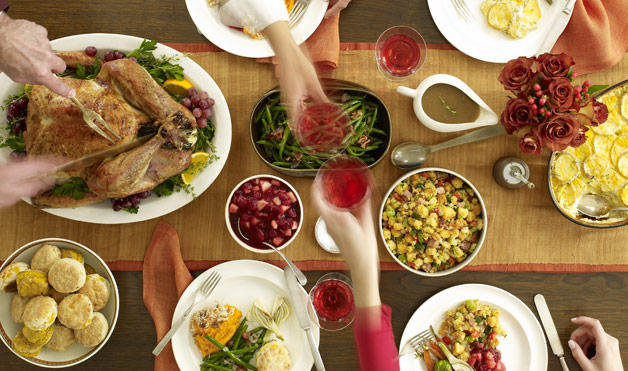The Quad: A look at how our traditional Thanksgiving meal came to be

(Creative commons photo by Satya Murthy via Flickr)
By Giselle Abcarian
Nov. 21, 2016 12:49 p.m.
With Thanksgiving just around the corner, I’m sure you can practically smell the turkey roasting in the oven, hear the cranberries sizzling in a pot on the stove and taste the familiar fall flavor of warm pumpkin pie.
While you can probably guess that these three dishes, along with gravy and stuffing, are the staples that rank at the top of Americans’ favorite Thanksgiving dishes, you may not know how they came to be associated with the holiday or why they hold such important positions on our tables.
Many of us learned in grade school that the first Thanksgiving was celebrated in 1621 by the pilgrims of Plymouth and their Native American allies in Cape Cod, yet most of the Thanksgiving dishes we eat today did not derive from this feast. In fact, with only a few records of the celebration’s actual menu, the dishes they ate remain largely a mystery.
Let’s start with turkey. Documents from the First Thanksgiving suggest that the pilgrims and Native Americans feasted on “wild fowl,” but it is impossible to determine what kind of wild fowl they ate. Some historians guess geese, duck or pigeons may have been more readily available at the time. The turkey, then, was most likely chosen later on in the evolution of Thanksgiving and came to be associated with the holiday for a variety of reasons.
Turkeys are bigger than most other birds and can therefore feed more people at the dinner table, which is one theory for how the turkey became the main Thanksgiving protein. Also, unlike cows and chickens, which produce goods such as milk and eggs, turkeys are not very profitable alive. They were also cheaper than other big birds, like geese, and easily hunted compared to animals such as deer, which in meat form is called venison.
[Related: Not into meat for Thanksgiving? You’re not the only one]
Gravy and stuffing have been around since ancient times and recipes for both most likely arrived in America with the pilgrims. Printed evidence of the word gravy can be found in the Forme of Cury, a medieval English collection of recipes from 1390. The English have been stuffing birds and cooking them since before the 16th century, though it was called “farce” instead of “stuffing” until after the 16th century. There is no historical evidence that the bird eaten at the first Thanksgiving was stuffed but if it was, historians guess it was stuffed with vegetables and not bread.
Cranberry sauce was most likely not served at the first Thanksgiving. Cranberries were harvested by Native Americans and used in a variety of foods. Sugar, however, was a luxury at the time and would not have been available for use in a sweet sauce. There are mentions of early settlers boiling fruit and sugar to serve as a sauce with meat, but not for another 50 years. It wasn’t until 1912 that cranberry sauce was available in a can and began to resemble the sugary, sticky sauce – or jelly – that we know and love today.
Butter and flour were also unavailable to make pumpkin pie for the first Thanksgiving, though pumpkins were abundant and may have been served roasted. By the 18th century, however, pumpkin pie was such a staple Thanksgiving dish that in 1705, a town in Connecticut delayed their Thanksgiving for a week after it was discovered that they didn’t have enough molasses to make pumpkin pie.
So this year, before you dig into your pile of food, use this bit of knowledge to appreciate how these dishes came to be on your plate. Or you can use it to impress your relatives. Nothing says “smart college student” better than giving a mini history lesson at the dinner table.

